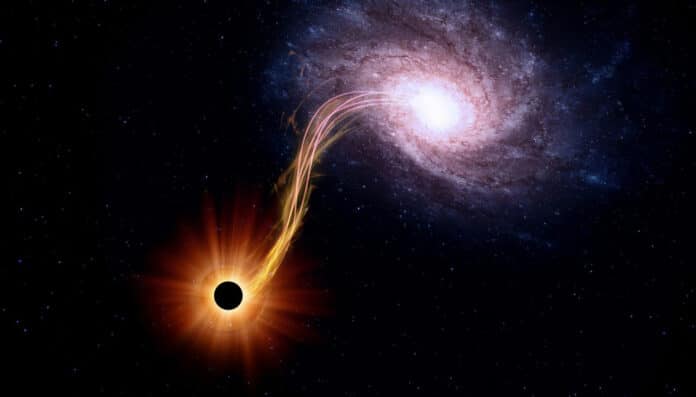Black hole jets have recently been found to emit X-rays, and it is still unknown how they accelerate particles to this high-energy state. One of the most popular models on how jets produce X-rays predicts that the jets’ X-ray emissions will remain constant over very long time scales (millions of years). Although, a new study seems to disprove this theory.
The new study suggests that the x-ray emissions of a statistically significant number of jets varied over just a few years.
Scientists are excited about this variability because two completely different but main models exist. Explaining the emergence of X-rays in these jets. One model uses extremely low-energy electrons, whereas the other uses extremely high-energy electrons. One of those models, in particular, is incompatible with any variation.
Here, scientists analyzed archival data from the Chandra X-ray Observatory. They examined 155 distinct locations within 53 black hole jets or nearly all of the black hole jets for which Chandra had multiple observations.
Lead author Eileen Meyer, an astronomer at the University of Maryland, Baltimore County, said, “Discovering relatively frequent variability on such short time scales “is revolutionary in the context of these jets because that was not expected at all.”
The simplest hypothesis for how jets generate X-rays assumes particle acceleration takes place at the galaxy’s center in the black hole “engine” that drives the jet and stability in X-ray emissions throughout time. The latest study, however, discovered swift variations in X-ray emissions throughout the jets’ length. This indicates particle acceleration is happening all along the jet, a long way from where the jet first started at the black hole.
The findings also suggested that jets closer to Earth exhibited higher variability than those located at great distances. These final objects are so far away that when their light enters the telescope, it feels like one is staring back in time. Meyer can understand why older jets would be less variable. Researchers believe that earlier in the universe’s history, the universe was smaller and ambient radiation was higher, which may have increased the stability of x-rays in the jets.
Meyer says, “Pulling this result out of the data was almost like a miracle because the observations were not designed to detect it.”
The team’s analysis suggests that between 30 and 100 percent of the jets in the study showed variability over short time scales.
The new findings seriously undermine one of the leading hypotheses for creating X-rays in black hole jets, and Meyer hopes the publication will inspire additional research.
Journal Reference:
- Meyer, E.T., Shaik, A., Tang, Y., et al. Variability of extragalactic X-ray jets on kiloparsec scales. Nat Astron (2023). DOI: 10.1038/s41550-023-01983-1
